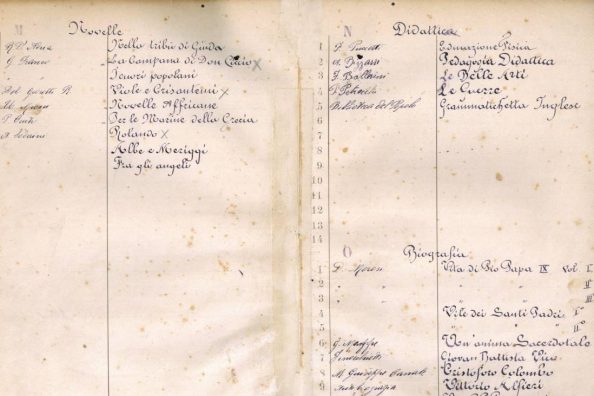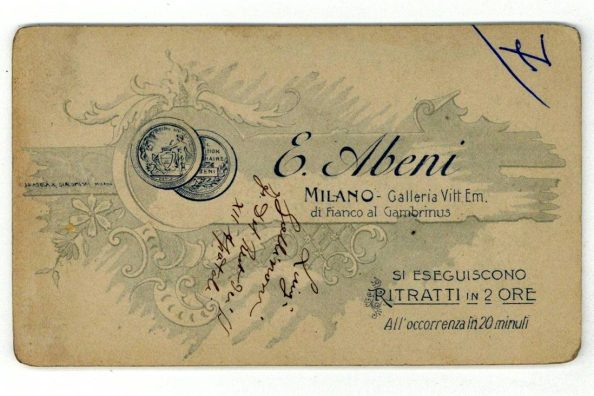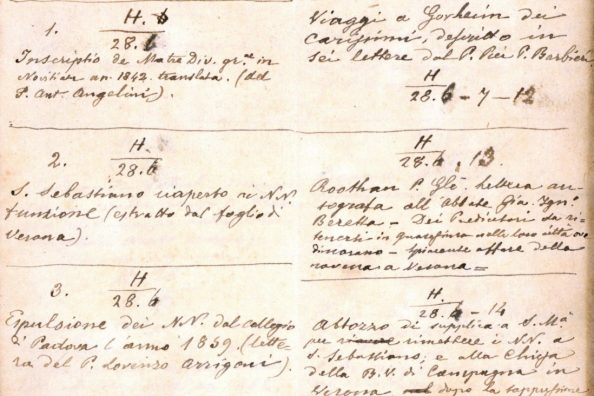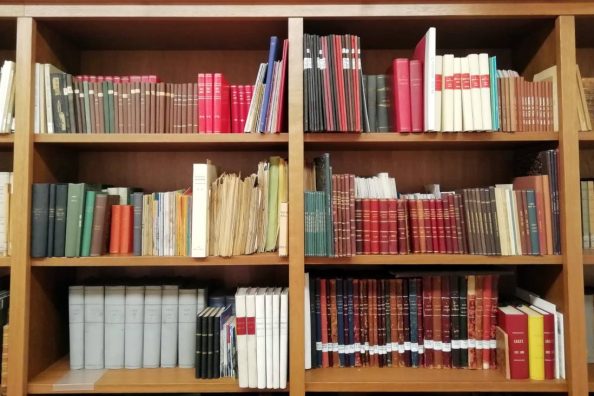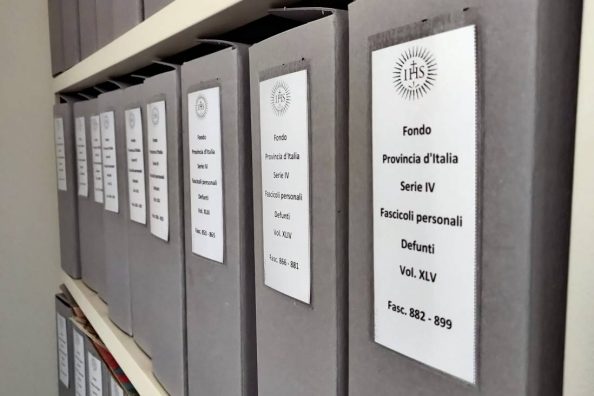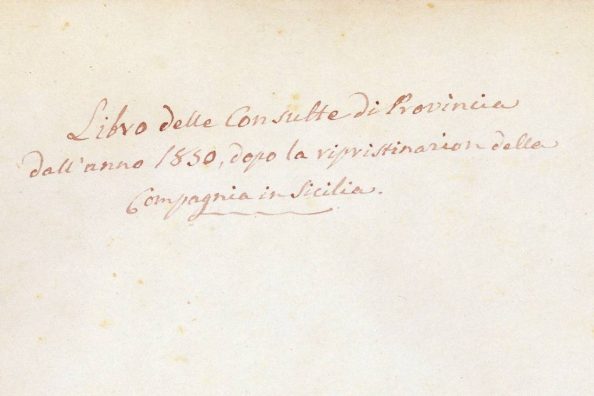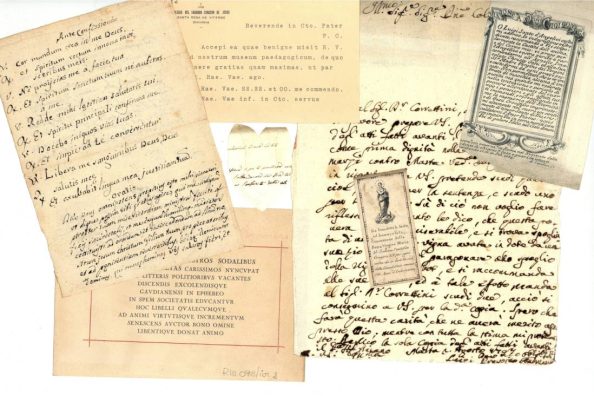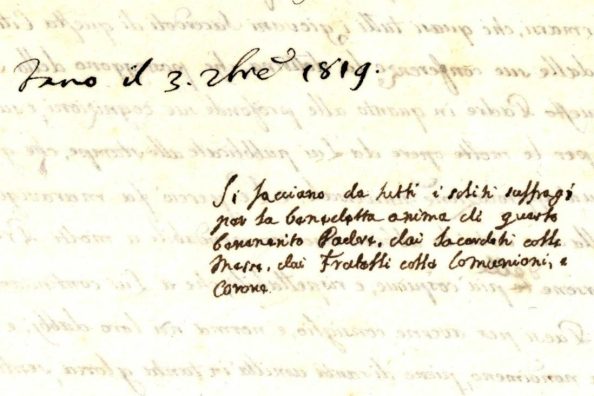Dressing a Jesuit: clothes and wardrobe composition
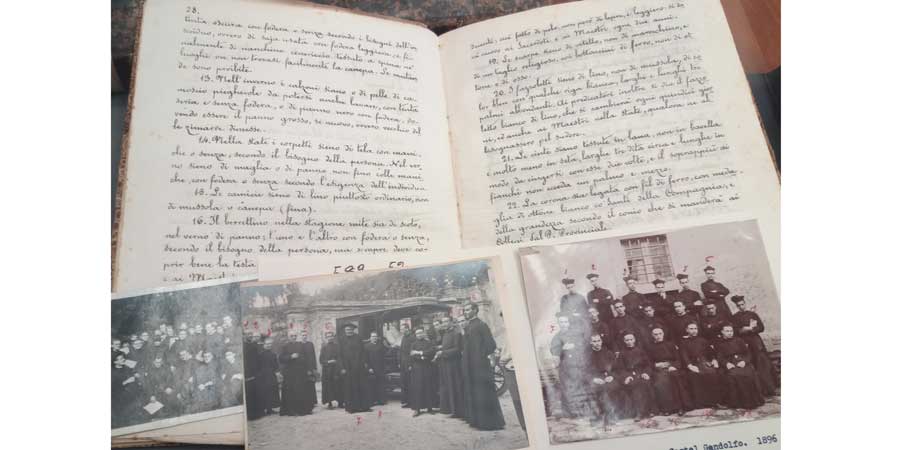
The dress of the Jesuits, not exempt from rules, changed over the centuries and the Society always drew up rules for the clothing and composition of the wardrobe at home.
The life of a Jesuit does not go beyond material matters, although it has its greatest fulfilment in the spiritual and apostolic dimension.
As we have seen in previous episodes, the papers in the historical archive open various windows into the daily life of the Jesuits in various historical periods. The Provincial or Superiors are often grappling with issues related to the cooking and distribution of food, the heating of the residences, and the morning wake-up call of the Jesuits.
The clothing of the Jesuits, not exempt from the rules, changed over the centuries, and the Society always drew up rules for clothing and for the composition of the household wardrobe.
Information about the Jesuits’ robes can be found in many documents, from the novitiate diaries we know that the aspiring novice, in the 19th century, did not wear the habit immediately but spent a short period, a week or ten days, in a separate area of the novitiate called the ‘flat’. After that period, he would renew his willingness to enter the novitiate, wearing the habit. From the records of St. Andrew’s, we learn that the novice of the 16th and 17th centuries was not to touch the floor with his foot in the morning when he woke up, unless he was already wearing his habit.
Of course, rules and indications, as well as the shape and cut of the robe, changed with time, as we saw a few months ago regarding the question of the robe of the Collegio dei Nobili in Rome.
Let us look today at some of the indications in force in the Company in the mid 19th century precisely on the typical composition of the house wardrobe.
Priests and masters each year had to have a new type of: robes ‘of saja without lining both in summer and winter’, every three years ‘new zimarra of cloth for the winter every six years, a ‘new cloak for priests and teachers of good scotch, to be used both in winter and summer’.
In a logic of recycling and reuse: “the robes, the cloaks, the zimaras that are resigned by the Fathers, the Masters and the scholastics must serve for the FF. Coadjutors’.
Indispensable then are “twill socks including the foot, rather wide and in such a way as to be easily removed and put on”.
Above “trousers that are of raw cloth in a dark colour with lining or without […] of ashy nankin woven on a thorn base in places where the canepa cannot be easily found”.
Finally, according to the customs of the time… ‘Underwear is forbidden’.
It is not yet possible to find a sketch of the robe thus composed, but it is not difficult for researchers to reconstruct the style and cut by comparing descriptions in documents and paintings or Jesuit iconographies that show how the robe changed with the fashion of the times.
Maria Macchi

